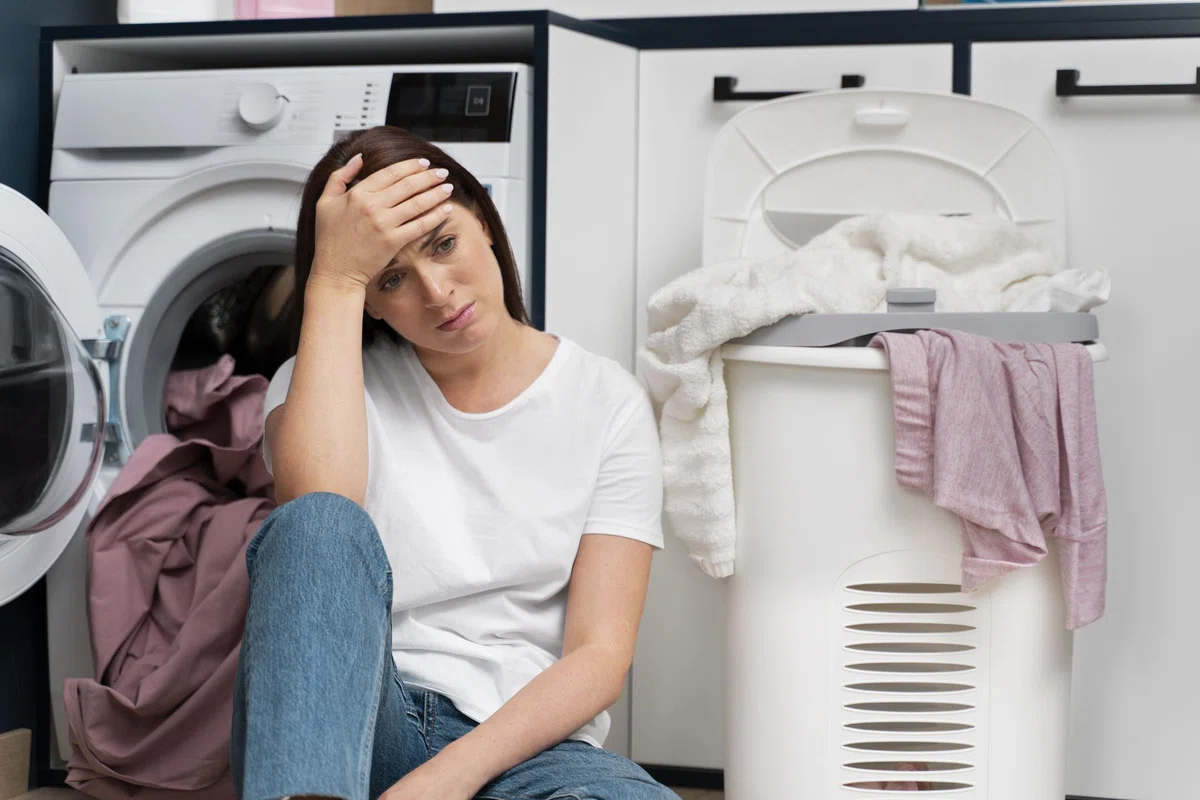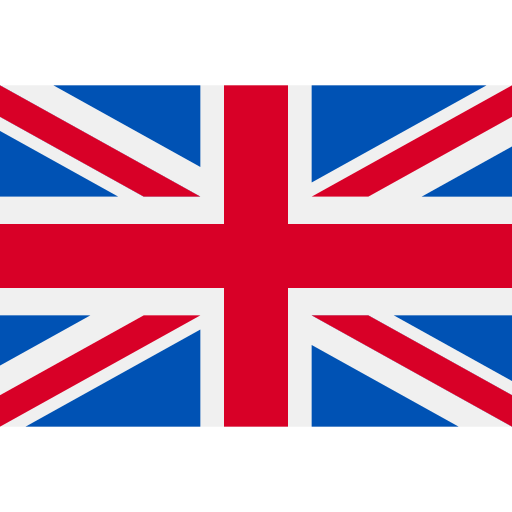
Washing machine drain problem: causes and solutions
Having trouble draining your washing machine? Learn about common problems such as filter clogging, pump failure, or electrical component problems. We offer tips and tricks for self-repair, but in some cases, you will need the help of a qualified technician. Keep your washing machine efficient and efficient!
Content
- Check the settings of the washing program
- Perform a visual inspection of the drain hose
- Manually drain the water
- Clean the filter of dirt
- Check the condition of the trap and the sewage system
- Evaluate the length of the washing machine drain hose
- When should you contact a washing machine repair specialist?
- Frequently Asked Questions
- Why is my washing machine not draining?
- How do I check the drain hose?
- What should I do if the drain filter is clogged?
- How do I check the operation of the pump?
- What should I do if the water level sensor is faulty?
Imagine the following difficult situation: you have loaded the washing machine, looking forward to taking out and hanging up your clean clothes. However, to your disappointment, you discover that the washing machine's hatch is strangely locked and a mysterious error appears on the display. Taking action, you notice that things still remain submerged in water, as the washing machine does not fulfill its main function - to drain the water and spin the laundry.
Let's try to understand together the reasons why the washing machine may refuse to perform the necessary water operations, as well as discuss possible actions in such a situation.
There are several potential factors that can cause your washing machine to malfunction with regard to water drainage. One common cause is that the channel through which water is supposed to drain may be clogged. This can happen due to a buildup of debris, small objects, or even fluff from clothing that may have clogged the drain system. It is also possible that the drain pump or the valve responsible for draining the water is experiencing malfunctions or has completely failed.
In other cases, an improperly functioning drain hose may be the cause of the problem. If the hose is improperly installed or the end is buried too deep into the drain, it may not be able to drain freely, causing a blockage. It's also worth mentioning that an improperly positioned or misaligned hose can cause drainage problems.
Check the settings of the washing program
When the washing machine does not release water, it is important to pay attention to three key aspects: the selected washing program, the condition of the drain hose and the ability to predict the next step. The challenge before us is to increase the confusion and variety of the text and decrease the predictability.
To understand the problem, you should start by checking the selected wash program. Perhaps the program you have chosen, such as wrinkle protection or delicate mode, does not automatically drain the water after washing. In such cases, you should try restarting the machine using a different program that includes a drain and spin stage.
If changing the program does not help, the next step is to check the condition of the drain hose. Before inspection, make sure that the washing machine is turned off and disconnected from the power source. Carefully check the drain hose for any kinks or kinks that may be preventing the water from draining properly. Also make sure that the hose is not obstructed by obstructions or dirt. If problems are found, correct them and restart the washing machine.
In case the problem persists after checking the washing program and the drain hose, there may be a more serious malfunction that requires professional intervention. In such a situation, it is recommended to contact an authorized service center or an experienced washing machine repair technician to diagnose and fix the breakdown.
To prevent problems with water drainage in the washing machine, it is recommended to regularly clean the drain filter and check the condition of the drain hose. It is also necessary to carefully select the washing program depending on the type of laundry and its spin and water drainage requirements. This will help to avoid potential mishaps and keep your washing machine running reliably.
Perform a visual inspection of the drain hose
The problem that occurs when the washing machine does not drain water can be due to several factors. One possibility is a kinked or crushed drain hose. This can happen, for example, if the machine is standing on the hose or the hose is pressed against the wall, preventing water from flowing freely. To solve this problem, the first thing to do is to inspect the drain hose and make sure it is in the correct position.
When inspecting the hose, pay attention to its flexibility and possible kinks. If the hose is kinked or crushed, you should straighten it out to allow for normal water flow. If the hose is pinched under a machine leg or stuck in a tight space, move the machine to keep the hose free of obstructions.
Once the hose has been corrected and is free of obstructions, you can try running the wash program with the water drain stage. Make sure that the selected program includes this stage and start the machine. If a kinked or crushed hose was the cause of the problem, the water should drain successfully after the steps taken.
However, if inspection and correction of the drain hose does not correct the problem, other possible causes should be investigated. Earlier in the text, the drain filter and pump were mentioned, which can also cause problems. Check the drain filter for clogs and clean it if necessary. If the problem persists, the pump may be defective and professional intervention is required to replace it.
Manually drain the water
To troubleshoot a washing machine drainage problem unrelated to the program, it is recommended that you follow the following instructions:
- Disconnect the washing machine from the power supply by removing the plug from the socket. This is necessary to prevent possible electric shocks during the process.
- Open the washing machine filter cover, which is usually on the bottom right. Make sure that the machine is switched off and disconnected from the power supply. The filter cover may be secured by special locks or screws that need to be removed or unscrewed.
- Place an appropriate container, such as a basin or bucket, under the emergency drain pipe. The emergency drain tube is usually located next to the washing machine filter and has a plug or cover. Remove the plug or open the cover of the tube.
- Allow water to drain from the emergency drain tube into a prepared container. Be aware that the water may be hot, so use caution and use protective gloves or other protective equipment as necessary.
By following these steps, you should be able to manually drain the water from the washing machine. However, it should be noted that this is a temporary solution and will not fix the machine. If the problem persists after draining the water or occurs again in subsequent wash cycles, it is recommended to contact a qualified technician or service center to diagnose and repair the machine.
To prevent similar situations in the future, it is recommended to regularly check and clean the drain filter, as well as monitor the condition of the drain hose. This will help to maintain the normal operation of the washing machine and prevent possible drainage problems.
Clean the filter of dirt
One of the possible reasons why your washing machine won't drain could be a clogged drain filter. The filter is used to catch foreign objects such as hair, hair, hairpins and coins from pockets that can get inside the washer and dryer along with the laundry. If not properly maintained and not cleaned regularly enough, the filter can become clogged, which can lead to drainage problems.
To keep your washing machine working properly, it is recommended that you clean the drain filter regularly, about every three months. This will prevent it from clogging and ensure that the water drain works smoothly.
To clean the drain filter, follow the steps below:
- Carefully remove the filter by turning it counterclockwise. Place a cloth or other absorbent material under the filter, as a small amount of water may leak out of the opening.
- Clean any accumulated dirt from the filter. 2. You can use a brush or toothbrush to remove hair, hair and other deposits. Then rinse the filter under running water to remove any remaining dirt.
- Inspect the opening from which the filter was removed. If you notice hair or threads stuck in this opening, remove them so that water can flow freely.
- Replace the cleaned filter and secure it by turning it clockwise. Make sure the filter is properly inserted and securely fastened. Then close the filter cover to prevent foreign material from entering the machine.
Regular cleaning of the drain filter not only helps prevent drainage problems, but also improves the overall efficiency of the washing machine. It also prevents possible damage to drainage system components and extends the life of the appliance.
The optimum time to clean the drain filter can vary depending on the intensity of use of the washing machine and the degree of soiling. If, despite regular cleaning of the filter, you experience drainage problems or other irregularities, it is advisable to contact a specialist or a service center to diagnose and repair the machine.
Check the condition of the trap and the sewage system
Paradoxically, the emerging problem of no water drainage in the washing machine can become unruly as a result of difficulties in the sanitary filter. The difficulties are caused by the presence of various foreign objects such as wool, hair, dust and even coins that happen to be inside the washing machine. However, it is a wise practice to regularly clean the filter at least once every three months to avoid it from clogging, which eventually leads to the washing machine to stop draining.
How to clean a sanitary filter:
- Very carefully turn the filter counterclockwise and remove it. Remember to place a rag on the floor to prevent water from leaking slightly out of the opening.
- Rinse and clean the filter thoroughly.
- Carefully inspect the opening from which you removed the filter, and if you find tangled hair or threads, remove them.
- Carefully and correctly reinstall the filter by turning it clockwise and closing the filter cover.
Evaluate the length of the washing machine drain hose
If you have problems pumping water out of your washing machine, you should pay attention to the length of the drain hose. It is important to remember that too long a hose can become a real hindrance for the pump, preventing effective pumping of water.
Unexpectedly, but it is this factor that can prevent even the newest model of washing machine from performing its main functions. What to do in such a situation?
The solution is to carefully check the correct installation of the washing machine. If you find that the machine is installed incorrectly, do not despair - there is a way out! A handyman who specializes in washing machine installation will be able to help you deal with the problem. He can move the machine to the right place and shorten the drain hose, thus ensuring that the whole system works more efficiently.
When should you contact a washing machine repair specialist?
If you, dear users, have checked the program, the hose, the filter, the trap and the drain and, oh horror, the water does not want to go away in any way, the problem is probably a malfunction of the washing machine itself. Typical malfunctions, shall we say, can manifest themselves in ways that cause you concern.
It happens that the pump gets clogged or the motor fails. In case your washing machine is producing a humming noise and not draining water, the cause may be a clogged pump - that very drain pump - or a malfunctioning machine motor.
It's also possible that the controller is broken. That fancy chip that receives signals from the control panel when you run a program, and directs all the elements inside the unit. The controller, it happens, can fail due to unpredictable power supply voltages, high humidity or even moisture intrusion.
Finally, the water level sensor can go bad. This small device is able to detect the amount of water in the drum. If the sensor fails unexpectedly, the washing machine stops spinning and draining water.
In such unusual situations, a repairman comes to the rescue. He will diagnose the malfunction, repair the part or replace it with a new one.
🔍 Frequently Asked Questions
❓Why is my washing machine not draining?
✅ The problem could be caused by a kinked or damaged drain hose, clogged drain filter, faulty pump or water level sensor.
❓ How do I check the drain hose?
✅ Make sure the hose is not kinked or blocked by obstructions. If problems are found, remove obstructions or replace the damaged hose.
❓ What should I do if the drain filter is clogged?
✅ Open access to the drain filter (usually located at the bottom of the machine) and remove impurities such as hair, lint or debris. After cleaning the filter, the water should drain normally.
❓ How do I check the operation of the pump?
✅ Check for obstructions in the pump and make sure it is running smoothly. If the pump is not working, it may need to be replaced.
❓ What should I do if the water level sensor is faulty?
✅ Answer: Check the water level sensor for proper operation or contact a professional for diagnosis and repair. A faulty sensor can cause drainage problems.







2 comments
Log in to leave a comment